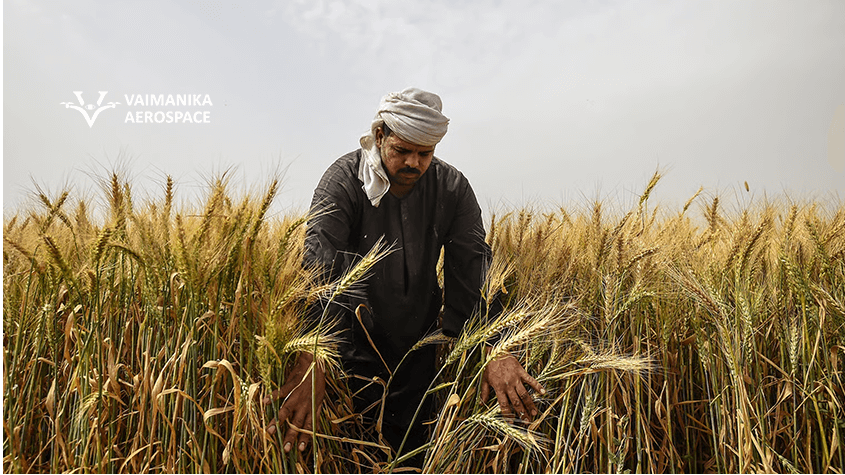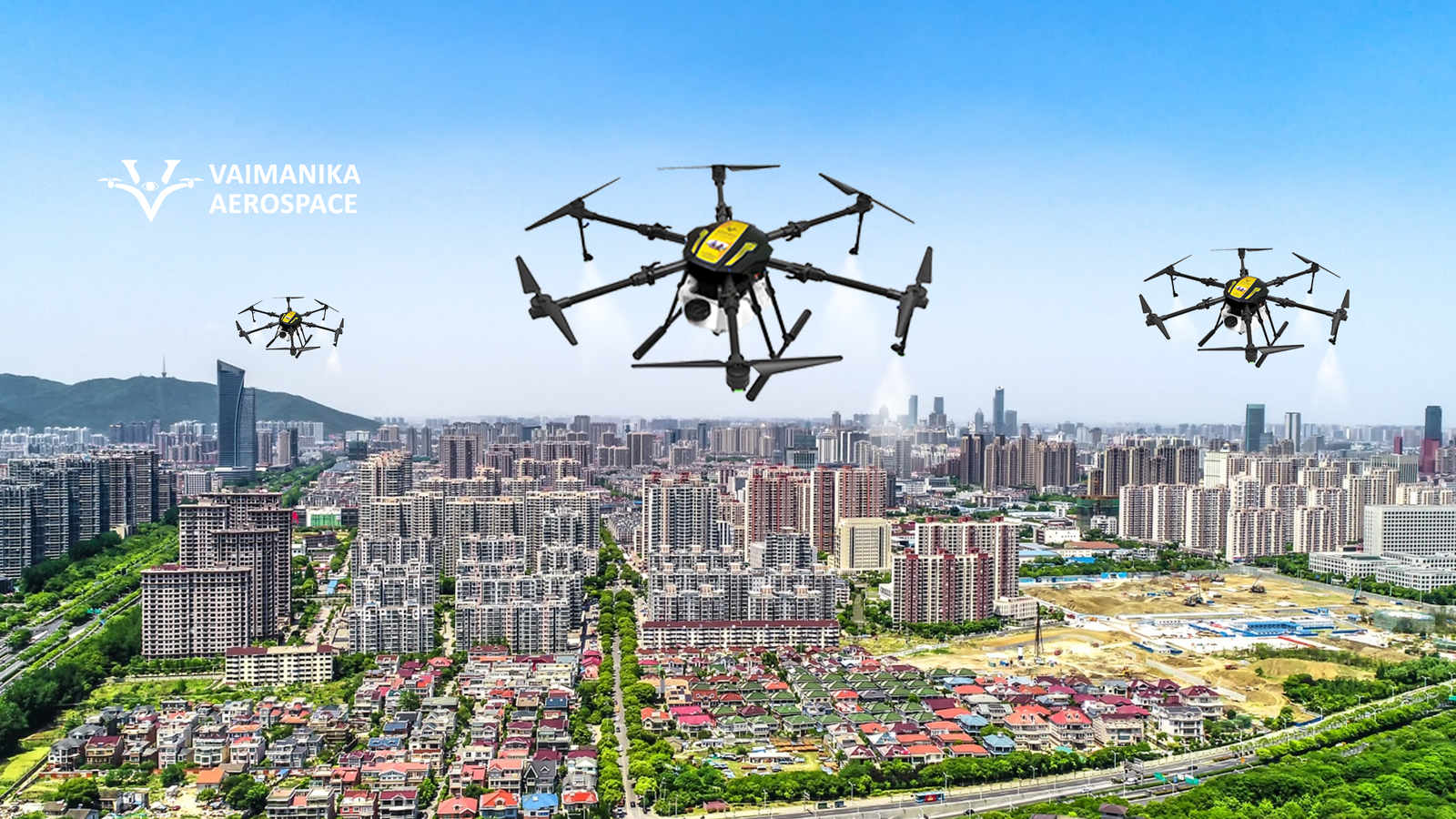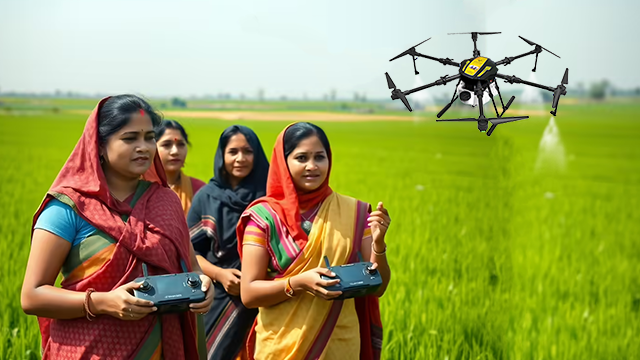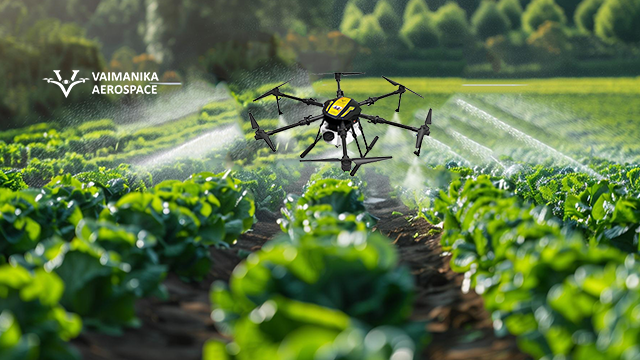Apart from agriculture contributing to 18% of India’s GDP, more than half of the country’s population (approx. 55%) depends on it for livelihood. However, Indian farmers face numerous challenges every day. Unpredictable climate changes, high costs of manual labour, and the pressure to produce more from less land are just a few factors that affect their crop productivity and efficiency. The lack of effective measures for farmers also significantly impacts their personal lives, both directly and indirectly.
That is where Vaimanika steps in to provide smart tech solutions to farmers, to help them better their productivity and improve yield results. First, let’s understand a few of these challenges.
- Climate change & inconsistencies
Unseasonal rains, droughts, strong heat waves, sudden storms and other irregular weather shifts play a huge part in negatively affecting the land farmers might have spent months working on. These circumstances disrupt farming cycles, damage crops, and make yield planning uncertain. They cannot always prepare for it in advance due to either inaccurate weather reports or a lack of labour and other resources.
- Labour shortage
The cost of hiring farm workers for manual labour like sowing, weeding, spraying pesticides, irrigation, and harvesting tasks is going up by the day. A physically challenging job like this forces labour to demand higher wages, which farmers can’t afford with their already thin margins. As a result, many rural workers are migrating to cities in search of better-paying jobs. With fewer workers available, farmers have no choice but to pay a higher rate or risk losses.
- High input costs
Farming activities that involve fertilisers, pesticides and water usage are becoming expensive, making it hard for farmers to manage their budgets. Their overuse or mismanagement can lead to increased costs without any actual progress. This is a huge financial burden on the farmer. This creates a cycle where farmers keep spending more, but don’t always see corresponding results.
- Crop monitoring challenges
Manually monitoring a vast farmland is hard for a farmer, especially with the naked eye. It is nearly impossible for them to assess every acre for crop stress, infestation, and other nutrient deficiencies. Shortage or lack of proper technology leads to farmers losing way too much time, and still leaving a high chance of blind spots. As a result of ineffective supervision and other manual limits, crop-yielding risks become higher. This makes it a constant struggle for farmers to stay ahead of potential risks.
While these challenges make farming difficult, technology is taking over to offer practical solutions. Agricultural drone companies in India have helped hundreds of farmers with improving crop monitoring, reducing input and labour costs, and tackling unpredictable weather. All this while making farming more efficient and data-driven. Here’s how:
- Precision spraying & irrigation mapping
Agri-drones use features like aerial imaging to detect areas of the field that are stressed due to a lack of water or nutrients. They spray pesticides or liquid fertilizer exactly where it’s needed, reducing waste and ensuring that crops get timely care. They are designed to optimise irrigation and spraying schedules, helping farmers cut costs and reduce losses. Precise application can help crops give better yields and produce less wastage despite inconsistent weather conditions.
- Automated processes
With farmers facing delays in critical tasks like sowing, spraying, and harvesting due to a lack of available or skilled labour, Kisan Drones help automate these processes, covering acres of land in minutes. They ensure that tasks are completed on time, simultaneously reducing heavy dependence on manpower. Hence, these drones not only fill the labour gap but also ensure more flexibility for farmers to focus on planning and managing their crops, instead of worrying about their losses.
- Targeted input application
The rising price of farming input is costing farmers in many ways and making farming increasingly expensive. Kisan Drones address this by spraying inputs only where needed, ensuring optimal application without waste. This has helped reduce input costs, maximise efficiency, and safeguard the profit margins of farmers, while promoting safe and responsible farming practices for the environment.
- Early disease detection
With AI-powered imaging, drone technology has helped identify unusual patterns in crops, alerting farmers to any early signs of pests or diseases. When timely action is taken, it is possible to prevent the risks of the entire crop getting spoiled by the spread of a disease. Agricultural drones also help reduce chemical use to protect the farmer’s income, as well as their farmland.
Drone technology has been tailored to power through weather, labour, and the rising costs. Vaimanika is a thriving agricultural drone company in India, and with us, you have the power to take control of every step of your crop cycle.
We have, and continue to help ease the pain of farmers who work hours on the field every day, providing them with security and confidence. Discover how our Kisan Drones can transform your field and make every season count, because smart farming means a stronger future.





